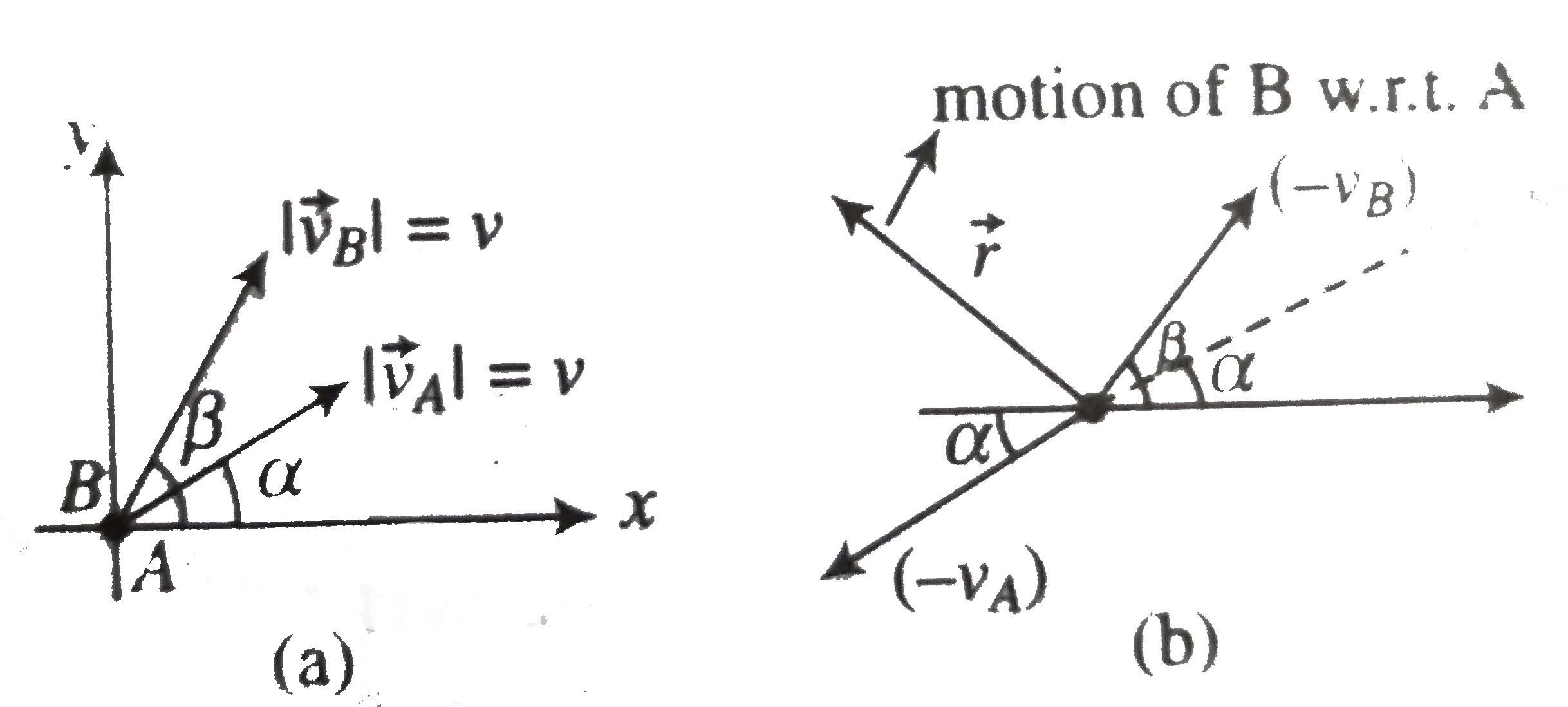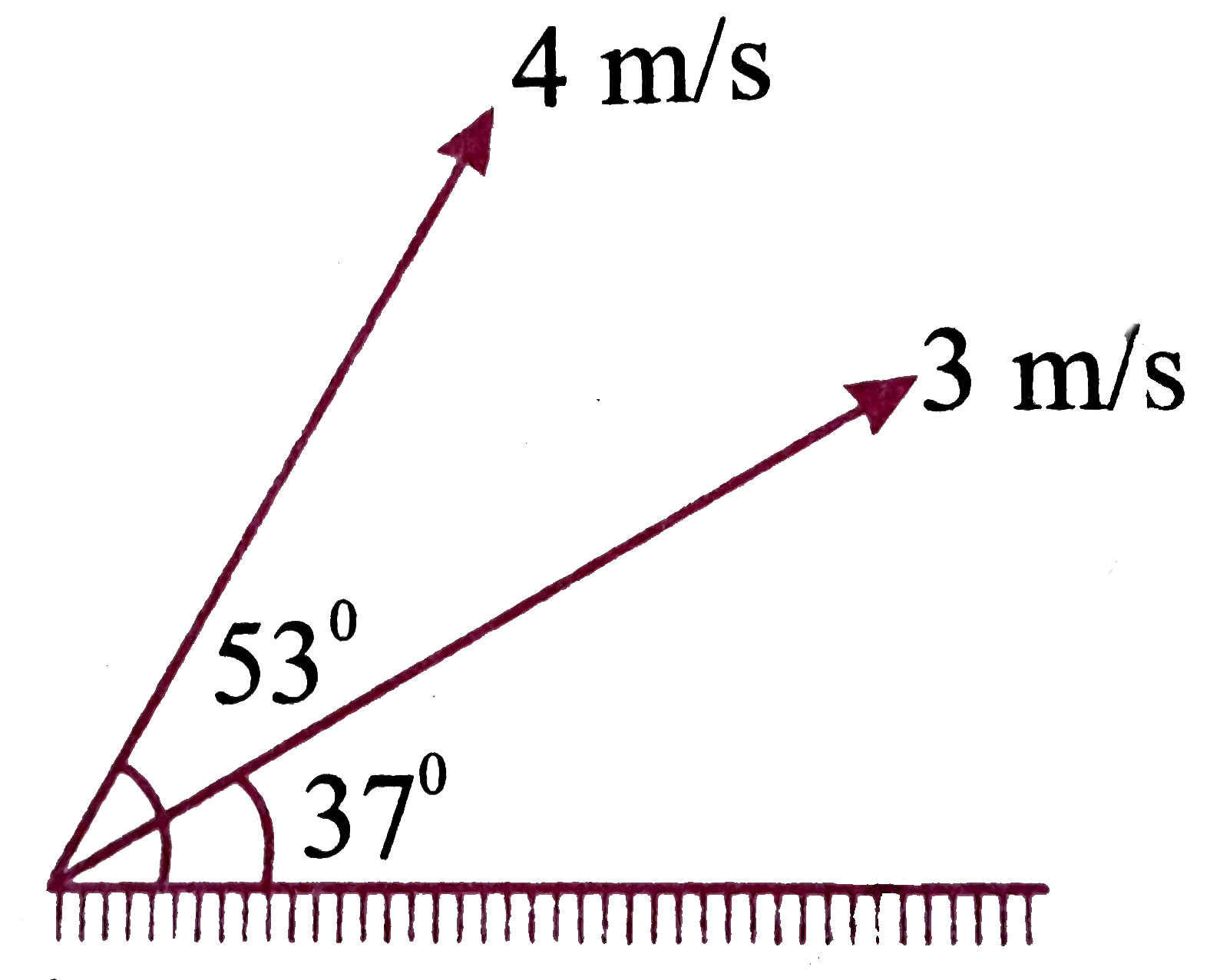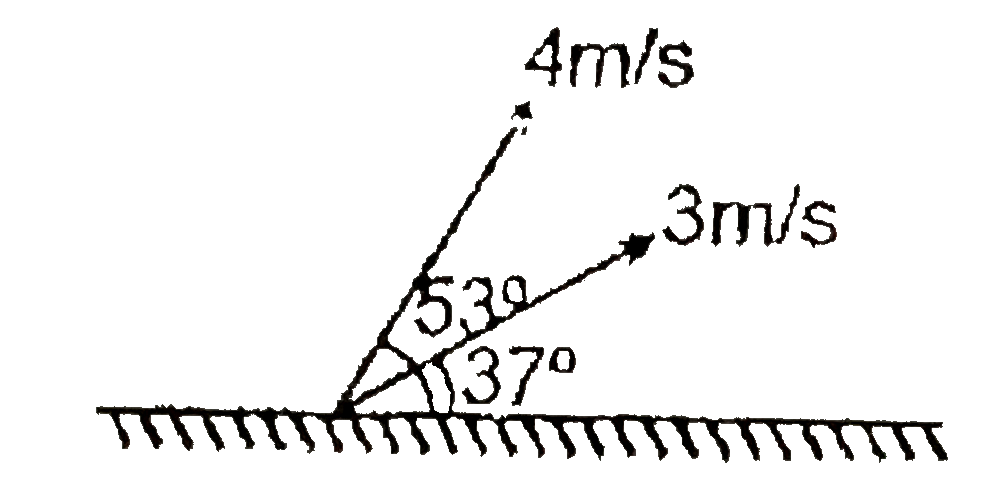Two particles are projected simultaneously from the same point, with the same speed, in the same vertical plane, and at different angles with the horizontal in a uniform gravitational field acting vertically downwards. A frame of reference is fixed to one particle. The position vector of the other particle , as observed from this frame, is →r. Which of the following statement is correct?
→r is a constant vector.
→r changes in magnitude as well as direction with time.
The magnitude of →r increases linearly with time, its direction does not change.
The direction of →r changes with time, its magnitude may or may not change, depending on the angles of projection.
The correct Answer is:C
c. 
A is fixed and B moves in the direction as shown in figure.
w.r.t A with constant velocity.
Direction of →r remains same and magnitude changes with time
linearly.
Here velocity of B w.r.t. A is constant because relative
acceleration is zero.
Topper's Solved these Questions
- MISCELLANEOUS KINEMATICSBOOK - CENGAGE PHYSICSCHAPTER - MISCELLANEOUS KINEMATICSEXERCISE - Multiple Correct Answer Type
26 Videos
- MISCELLANEOUS KINEMATICSBOOK - CENGAGE PHYSICSCHAPTER - MISCELLANEOUS KINEMATICSEXERCISE - Linked Comprehension Type
35 Videos
- LINEAR AND ANGULAR SIMPLE HARMONIC MOTIONBOOK - CENGAGE PHYSICSCHAPTER - LINEAR AND ANGULAR SIMPLE HARMONIC MOTIONEXERCISE - Multiple Correct Answer Type
9 Videos
- MISCELLANEOUS VOLUME 2BOOK - CENGAGE PHYSICSCHAPTER - MISCELLANEOUS VOLUME 2EXERCISE - INTEGER_TYPE
10 Videos
Similar Questions
Knowledge Check
Two particles are projected from the same point, with the same speed, in the same vertical plane, at different angles with the horizontal.A frame of references is fixed to one particle.The position vector of the other particle as observed from this frame is →rWhich of the following statements are corrects?
Adirection of →r does not changeB→r changes in magnitudes and direction with timeCThe magnitude of →r increases linearly with timeDThe direction of →r changes with time, its magnitude may or may not change, depending on the angles of projectionTwo particles are projected simultaneously with same speed V0 in same vertical plane at angle 30∘and60∘ With the horizontal .The time at which their velocities becomes parallel is
AV02gBV0(√3+12g)C√3V02gDV0(√3−1)gTwo particles are projected simultaneously with the same speed v in the same vertical plane with angles of elevation θ, and 2θ, where θ<45∘.At what time will velocities be parallel?
At=vgtanθ2cosec3θ2Bt=vgcosθ2cot3θ2Ct=vgcosθ2tan3θ2Dt=vgcosθ2cosec3θ2
Two particles are projected from the same point with the same speed at different angles θ1 & θ2 to the horizontal. They have the same range. Their times of flight are t1 & t2 respectily
View SolutionA number of particles are projected from a given point with equal velocities in different directions in the same vertical plane. At any instant they will lie on
View SolutionTwo particles P & Q are projected simultaneously from a point O on a level ground in the same vertical plane with the same speed in directions making angle of 30∘ and 60∘ respectively with the horizontal.
View SolutionTwo partides. are thrown from the same point in the same vertical plane, as shown in figure simultaneously. Then indicate the correct statements :

View SolutionTwo particles are projected simultaneously from a point with different speeds and along the different directions. When both the particles are in air, then
what will be the path of one particle with respect to the other ?
View Solution


